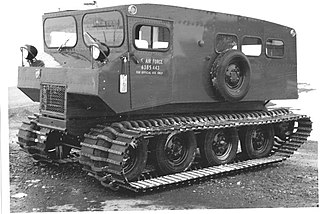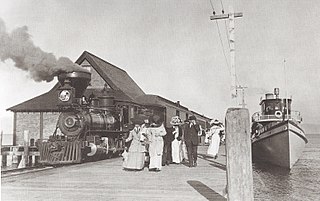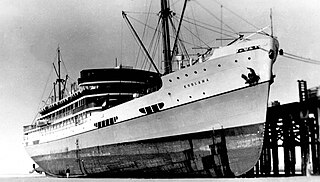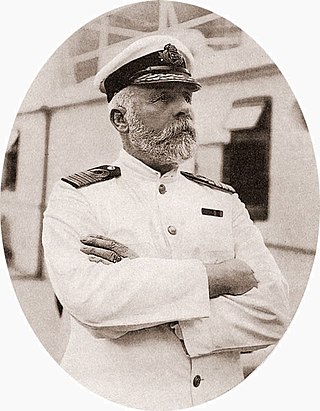Related Research Articles

HMAS Adelaide was the lead ship of the Adelaide class of guided missile frigates built for the Royal Australian Navy (RAN), based on the United States Navy's Oliver Hazard Perry-class frigates. She was built in the United States and commissioned into the RAN in 1980.

A ship is scuttled when its crew deliberately sinks it, typically by opening holes in its hull.

The Dee Why and Curl Curl, were two identical steam ferries servicing Sydney Harbour's Circular Quay to Manly service. Both commissioned in 1928, they were the largest ferries on Sydney Harbour until the 1938 introduction of the South Steyne.

Minnehaha is a steam-powered excursion vessel on Lake Minnetonka in the U.S. state of Minnesota. The vessel was originally in service between 1906 and 1926. After being scuttled in 1926, Minnehaha was raised from the bottom of Lake Minnetonka in 1980, restored, and returned to active service in 1996. The vessel operated uninterrupted on Lake Minnetonka until 2019. It is currently stored in a maintenance facility in the town of Excelsior.

A snow coach is a specialized passenger transport vehicle designed to operate over snow or ice, similar to a large, multi-passenger snowcat equipped with bus-style seating. These vehicles may have multiple sets of massive, low-pressure tires, or they may have tracks. Snow coaches may seat ten or more passengers and are often used for sightseeing tours or over-snow transportation.

SS Tahoe was a steamship that operated on Lake Tahoe at the end of the 19th century and the first half of the 20th. Scuttled in 1940, the wreck presently lies in 400 feet (120 m) of water off Glenbrook, Nevada. The wreck was first visited in 2002 by a team from New Millennium Dive Expeditions (NMDE) in a record-setting high-altitude dive for Lake Tahoe. As a result of the work that NMDE did on the Tahoe site from 1999 up to their dives in 2002, Tahoe became the first maritime site in Nevada to be listed in the National Register of Historic Places.

SS Columbus was a German ocean liner laid down before the start of World War I.
Shake, Rattle and Roll 8 is a 2006 Filipino horror anthology film directed by Rahyan Q. Carlos, Topel Lee, and Michael Tuviera, and the eighth installment of the Shake, Rattle & Roll film series. It is produced by Regal Entertainment, and was an entry to the 2006 Metro Manila Film Festival.
Scuttle may refer to:

MV Koolama was an Australian merchant vessel that sank as a result of several attacks by Japanese aircraft in February–March 1942. It was also the centre of the Koolama Incident, an alleged mutiny resulting from these attacks.

HMAS Doomba was a Royal Australian Navy (RAN) warship of World War II. Built for the Royal Navy around the end of World War I as the Hunt-class minesweeper HMS Wexford, the ship only saw two years of service before she was decommissioned in 1921 and sold to the Doomba Shipping Company. The vessel was renamed SS Doomba, converted into a passenger ship, and operated in the waters around Brisbane until 1939, when she was requisitioned by the RAN for wartime service. Serving first as an auxiliary minehunter, then an auxiliary anti-submarine vessel, HMAS Doomba was purchased outright by the RAN in 1940, and served until early 1946, when she was sold and converted into a linseed oil lighter. Doomba was scuttled off Dee Why, New South Wales in 1976.

Cockle Bay is a small bay within the locality of Picnic Bay on south-western corner of Magnetic Island, City of Townsville, Queensland, Australia.

HMAS Mercedes was an auxiliary minesweeper of the Royal Australian Navy (RAN) between 1942 until 1946. Built in 1913 for the Ocean Steam Ship Co. she was sold to the Straits Steam Ship Co. in 1925. She was requisitioned by the Royal Navy in 1939 and converted into an auxiliary minesweeper and named HMS Medusa. She was transferred to the Royal Australian Navy in 1942 and renamed HMAS Mercedes until she was returned to her owners in 1946. She was sold and was scuttled off Sydney on 23 January 1948.
HMAS Coogee was a passenger ferry that briefly served as a Royal Australian Navy armed patrol vessel and minesweeper in the latter part of the First World War. She was launched in 1887 and scuttled in 1928.

"The captain goes down with the ship" is a maritime tradition that a sea captain holds the ultimate responsibility for both the ship and everyone embarked on it, and in an emergency they will devote their time to save those on board or die trying. Although often connected to the sinking of RMS Titanic in 1912 and its captain, Edward Smith, the tradition precedes Titanic by several years. In most instances, captains forgo their own rapid departure of a ship in distress, and concentrate instead on saving other people. It often results in either the death or belated rescue of the captain as the last person on board.

Sepahan Airlines Flight 5915 was a scheduled domestic passenger flight from Iranian capital Tehran Mehrabad International Airport to Tabas, South Khorasan province, Iran. On 10 August 2014, the HESA IrAn-140 twin turboprop serving the flight crashed shortly after takeoff from Mehrabad International Airport, falling into a boulevard near the Azadi Stadium. Of the 42 passengers and six crew on board, 40 people died.

Uruguay remained neutral for most of World War II. The policy of President Alfredo Baldomir, leading the Colorado Party, was to support the Allied cause, but from a neutral base. Great Britain retained considerable influence with the Baldomir regime, largely through the efforts of Sir Eugen Millington-Drake, who was the British Minister in Montevideo from 1934 to 1941. In January 1942, Baldomir terminated diplomatic relations with the Axis powers. He resigned in 1943 and his neutrality policy was continued by his successor Juan José de Amézaga, also of the Colorado Party. In February 1945, having signed the Declaration by United Nations, Amézaga declared war on Germany and Japan.
Cattaro was a Yugoslavian passenger ship which was laid down in 1914 as the Austro-Hungarian Hunyad. However, construction was delayed due to the First World War and she was not launched until 1920. The vessel was then laid up and not completed until February 1932, entering service as Jugoslavija. She was seized by the Italians in 1941 and was put into service as the auxiliary cruiser Cattaro. She was scuttled in 1943 but was raised by the Germans, repaired and entered Kriegsmarine service. She was again scuttled in March 1944 and suffered further damage in June 1944. Raised in 1945 and returned to her former owners and name, the ship was scrapped at Split, Yugoslavia in 1947.
The following index is provided as an overview of and topical guide to Wikipedia's articles on recreational dive sites. The level of coverage may vary:
References
- ↑ "Scuttle shake". Parkers's Car Glossary. Archived from the original on 2011-07-16.
- ↑ "The Knowledge: Scuttle shake". The Times Online . 19 February 2006. Retrieved 2024-11-12.